

(Printable Version at Bottom)
Kingdom – Animals
Phylum – Arthropoda
Class – Insecta
Orders - Looking at 9 Orders of Insects
1) Order – Coleoptera
2) Order – Dictyoptera
3) Order – Diptera
4) Order – Ephemeroptera
5) Order – Lepidoptera
6) Order – Hymenoptera
7) Order – Odonata
8) Order – Orthoptera
9) Order – Phasmida
1) Order – Coleoptera
Examples of Families:
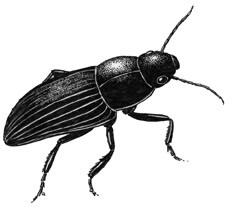


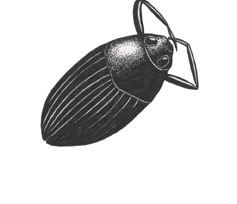
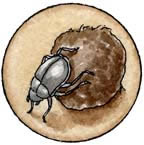
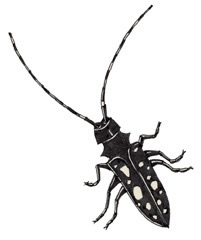
The order Coleoptera includes the beetles. This is the largest order that contains the most species.
Wings: They have two pairs of wings. The outside pair (forewings) are hard and protective. They are called elytra. They split and spread when the insect needs to fly so the soft wings underneath (hind wings) can be used.
Mouth Parts: Most have chewing mouthparts. Some have piercing mouthparts.
Metamorphosis: They undergo complete (complex) metamorphosis.
Significance to Humans: They can be beneficial (i.e. ladybugs), but some families attack food crops and are considered pests.
2) Order – Dictyoptera
Examples of Families:
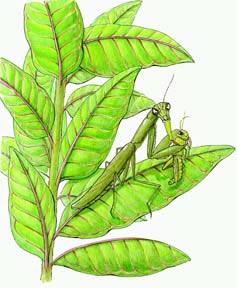
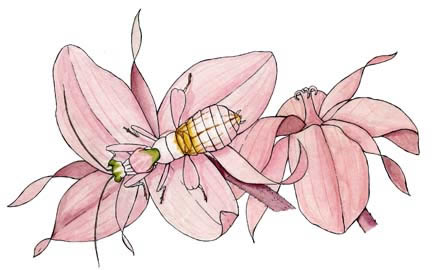
They have long, thin antennae with many segments.
Wings: They usually have two pairs of wings. The forewings are often adapted as tougher coverings and held flat over the back. Some lack wings.
Mouth Parts: They have biting mouthparts.
Metamorphosis: They undergo incomplete (simple) metamorphosis with the nymphs looking like small versions of the adults (with underdeveloped wings).
Significance to Humans: Though some are considered pests (cockroaches), many are beneficial (praying mantis) preying on other pest insects.
3) Order – Diptera
Examples of Families:

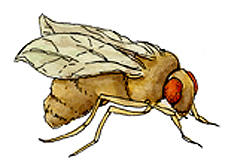
These are known as the true flies.
Wings: They have one pair of wings - the hind wings are adapted structures called halterers which may help with flying.
Mouth Parts: They have piercing and sucking mouthparts. Some are parasites.
Metamorphosis: They undergo complete (complex) metamorphosis.
Significance to Humans: They are considered serious pests. They destroy crops and spread many diseases, including malaria.
4) Order – Ephemeroptera
Examples of Families:

Adults only survive for a couple of day to mate and lay eggs. They hatch from underwater larva and fly above the water, mate, lay eggs and die. They have long thread-like legs and two long tail strands.
Wings: They have two pairs of triangle-shaped wings - the hind wings are much smaller.
Mouth Parts: Adults do not eat, so have no mouthparts.
Metamorphosis: They undergo incomplete (simple) metamorphosis.
Significance to Humans: They are harmless to humans and fishing flies made to look like them have helped many fishermen catch fish!
5) Order – Lepidoptera
Examples of Families
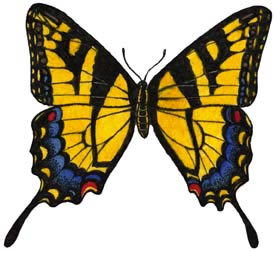
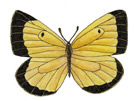
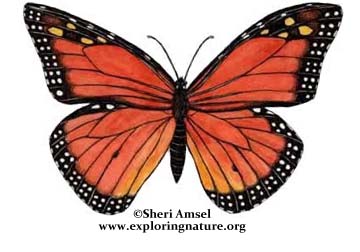


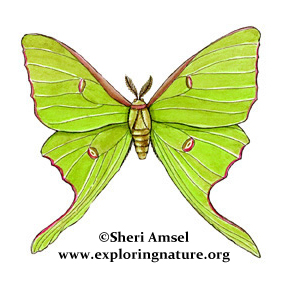
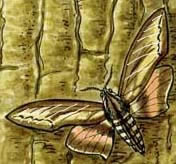
Butterflies and moths are showy and well-known insects. Butterflies are more commonly active in the daytime as opposed to the more nocturnal moths. Moths have more feathered antennae and hairier bodies than butterflies. Both have larvae that can be destructive to trees and food crops.
Wings: As adults they have two pairs of large wings covered with protective scales.
Mouth Parts: Adults have sucking mouthparts. Larvae (young stages) have chewing mouthparts.
Metamorphosis: They undergo complete (complex) metamorphosis.
Significance to Humans: Their young form (larval caterpillars) are considered serious pests and are responsible for crop destruction. Adults, on the other hand, can be beneficial pollinators.
6) Order – Hymenoptera
Examples of Families
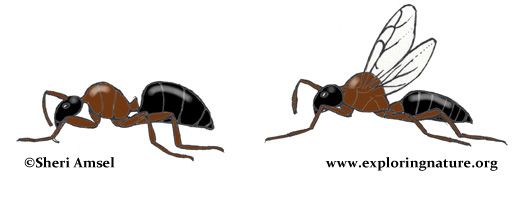
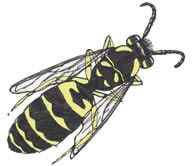

Many have an odd narrow “waist” between the thorax and the abdomen. Many form colonies with different and distinct roles.
Wings: Some are have wings (two pairs) and some are wingless.
Mouth Parts: Many have chewing mouthparts (ants), though some have sucking mouthparts (honeybees).
Metamorphosis: They undergo complete (complex) metamorphosis.
Significance to Humans: Though some have painful and venomous stings (wasps), many are very important and beneficial pollinators (bumblebees).
7) Order – Odonata
Examples of Families
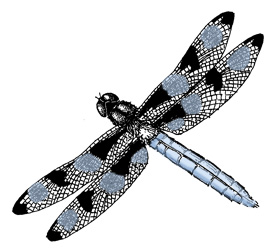
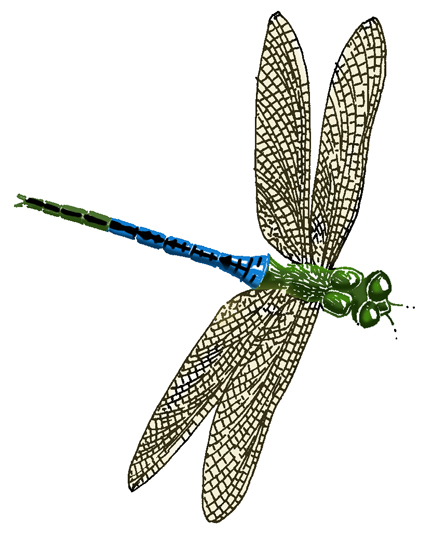
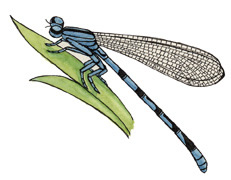
Their young (larvae) are called naiads and live in the water (aquatic), so adults are found around wet areas, where they will mate and lay eggs. They are predators with large eyes for spotting prey and strong flight for catching prey. Dragonflies hold their wings flat and out from their bodies, while damselflies hold their wings together and pulled into the body.
Wings: They have two pairs of long wings.
Mouth Parts: They have chewing mouthparts. Naiads have piercing mouthparts for catching underwater prey.
Metamorphosis: They undergo incomplete (simple) metamorphosis.
Significance to Humans: They feed on insects (especially mosquitoes), so are considered beneficial.
8) Order – Orthoptera
Examples of Families
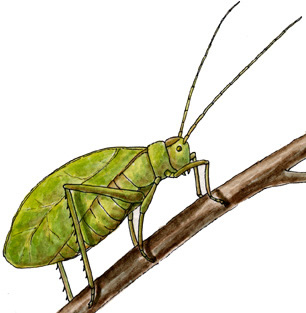

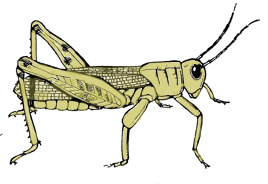
Their back legs are usually large and build for jumping.
Wings: They have two pairs of long wings, though some have no wings.
Mouth Parts: They have chewing mouthparts.
Metamorphosis: They undergo incomplete (simple) metamorphosis with the nymphs looking like small versions of the adults (with underdeveloped wings).
Significance to Humans: They can be very destructive to crops.
9) Order – Phasmida
Examples of Families

They have very long, stick-like bodies with long legs and antennae. They are so well camouflaged that they move slowly on their food plants and are rarely seen by predators.
Wings: Most adults in North America are wingless (tropical forms may have wings).
Mouth Parts: They have chewing mouthparts.
Metamorphosis: They undergo incomplete (simple) metamorphosis with the young looking like small versions of the adults.
Significance to Humans: They can be very destructive to some tree species.
Other Insect Orders –
Collembola - Springtails
Dermaptera - Earwigs
Diplura Two - Pronged Bristle-tails
Embiopter -a Web Spinners
Grylloblatodea
Hemiptera - True Bugs
Isoptera - Termites
Mallophaga - Biting Lice
Mecoptera - Scorpionflies
Neuropter - Lacewings
Plecoptera - Stoneflies
Protura
Psocoptera - Bark and Book Lice
Siphonaptera - Fleas
Siphunculata - Sucking Lice
Strepsiptera Stylops
Thysanoptera - Thrips
Thysanura - Silverfish
Trichoptera - Caddis Flies
